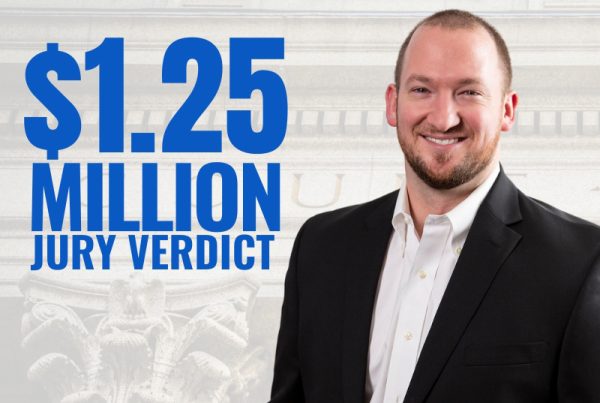On the morning of June 15, 2020, the Supreme Court of the United States (“SCOTUS”, “the Court”) handed down their opinion in the case of Bostock v. Clayton County, Georgia 1 (“Bostock”), solidifying the legal protections of the LGBTQ+2 community within the workplace. Penned by Justice Neil M. Gorsuch and joined by Chief Justice John G. Roberts, Jr., Justice Ruth Bader Ginsburg, Justice Elena Kagan, Justice Sonia Sotomayor, and Justice Stephen G. Breyer, the opinion states that Title VII of the Civil Rights Act of 19643 (“Title VII”) protects the LGBTQ+ community from termination by reason of their gender identity or sexual orientation. While the opinion is clear in its intentions, it is important to understand the Court’s holding and how the majority came to rule this way. As we dive into the opinion, we must look at the important statute and case law that led to this decision—Title VII of the Civil Rights Act of 1964, University of Texas Southwestern Medical Center v. Nassar 4 (“Nassar”), and Gross v. FBL Financial Services, Inc.5 (“Gross”).
Holding: “An employer who fires an individual merely for being gay or transgender defies the law [Title VII].”6
Leading to this decision, the Court looked at two key issues:
- The meaning of “sex” within Title VII
- The interpretation of “because of” within Title VII, as quoted below
Title VII, in part, states:
“It shall be an unlawful employment practice for an employer to fail or refuse to hire or to discharge any individual, or otherwise to discriminate against any individual with respect to his compensation, terms, conditions, or privileges of employment, because of such individual’s race, color, religion, sex, or national origin…”7
The issues brought before the Court, being the definition of “sex” and interpretation of “because of”, were paramount to the Court’s decision. As the majority opinion notes, the Court looked to the definition of “sex” as it would have been in 1964 when this statute was initially drafted, approved by Congress, and signed by the President. Although the term “sex” has evolved in meaning to encompass social norms exceeding the definition of the time, the parties concede to using the contemporary definition as, the employees state, it still supports their argument and it does not lead to further debate. “Sex”, as defined in the opinion, is referred to as the, “status as either male or female [as] determined by reproductive biology.”8 Given this definition of “sex”, the Court moved on to the interpretation of “because of” within Title VII.
To define “because of” as used in Title VII, the Court looked to Nassar and found it defined as, “by reason of” or “on account of”.9 To go further, the Court incorporates the testing system of ‘but-for’ causation, the foundation of Nassar’s definition, as prescribed in Gross.10 This system looks to change one factor and, if a decision changes, then the cause of that decision was the change. This system was used to reflect the Court’s finding of homosexuality and transgender status as being under the umbrella of “sex”. Simply, if an employer terminates a male employee because of his marriage to another male, but would tolerate employing a female married to a male or a male married to a female, it is because of the male employee’s sex that the employer fired him (but for the employee’s sex, he would still be employed). Further down, I will build on this example, but there must be explanation of one final facet of the decision—intent.
Title VII, from its drafting to the present day, has relied on intent playing the deciding factor. As the Court concedes, intent is pure and unarguable when a person’s sex, now inclusive of gender identity and sexual orientation, is used as a reason for termination. The act of decision-making with reasoning implies intent—there is no possible way for an employer to state they did not intend to fire an employee for being transgender when part, or all, of their reasoning is because of that employee’s gender identity. The causal relationship between intent and “because of” within Title VII is unavoidable when properly read. To terminate employment because of ___ is to intentionally terminate them due to that factor. With this notion of intent comes a larger issue—can an employer note an employee’s homosexuality or transgender status as part of their reasoning in terminating said employee? The Court’s response is no. Whether in part or as a whole, the reasoning of termination relating to an employee’s homosexuality or transgender status requires intent, therefore violating Title VII. To build on the example above, we can see below that the Court’s logic is sound:
Person A is a cigender11, homosexual male. He is terminated from his job after his employer discovers he is married to another man. His employer, stating his reasoning, notes Person A’s homosexuality along with his tendency of taking breaks longer than afforded by company policy.
In this example, Person A’s employer is in violation of Title VII as he has intentionally relied, in part, on Person A’s homosexuality as reasoning for termination. Any intention of discrimination due to sex is a violation of Title VII. To go one step further, we can apply the but-for causation test. But for Person A’s sex, his employer would have no issue with marriage to a male (i.e. if Person A were female). Because of Person A’s homosexuality (in this case, a male attracted to a male), his employer reasons, in part, that employment is no longer possible. This, therefore, is a clear cut example of discrimination because of one’s sex in violation of Title VII. Countless other examples can be made, but the bottom line of this ruling is that employers are unable to terminate an employee based in part or whole on that employee’s gender identity or sexual orientation.
To be clear, this opinion is not the be-all, end-all. The arguments heard leading to this opinion did not include any violation of religious freedoms. The Court, noting this, stated, “[s]o while other employers in other cases may raise free exercise arguments that merit careful consideration, none of the employers before us today represent in this Court that compliance with Title VII will infringe their own religious liberties in any way.”12 As it stands, SCOTUS has interpreted Title VII to expand protections to include the LGBTQ+ community under the term “sex”. Given that the Court is now expecting cases regarding Title VII’s infringement on religious liberties, there will likely be additional clarification in the future. Together, we can celebrate the ruling in Bostock as an expansion of protections for the LGBTQ+ community.
As a gay man, I have been delighted in seeing my communities, legal and LGBTQ+, come together once again to fight for change. I am equally delighted to work at a firm that is completely accepting and progressive, that works toward positive change internally and externally. As we celebrate Pride Month, we must remember the countless other fights to ensure equal protections and rights under the law as pushed for within our communities including, but absolutely not limited to, the ruling in Obergefell v. Hodges 13 and the Stonewall Riots. We celebrate Pride Month by remembering those who have dedicated their lives for the advancement of our community and to empower ourselves through education, activism, and outreach. While this ruling is one step in the right direction, we understand there is still much to do in the fight for the protection of healthcare, hate crime legislation, homelessness, and countless other issues facing the LGBTQ+ community. The Simon Law Firm, P.C. stands proudly with the LGBTQ+ community in the fight for justice.
Written by Tyler H. Shah, Paralegal
1Bostock v. Clayton County, Georgia, 590 U.S. ___ (2020) (slip op.)
2Lesbian, Gay, Bisexual, Transgender, Queer/Questioning Inclusive Community, encompassing sexual orientations and gender identities on all spectrums and those that do not fall on any spectrum.
3Civil Rights Act of 1964 § 7, 42 U.S.C. § 2000e et seq (1964)
4University of Texas Southwestern Medical Center v. Nassar, 570 U.S. 338 (2013)
5Gross v. FBL Financial Services, Inc., 557 U.S. 167 (2009)
6590 U.S. ___, ___ (2020) (slip op. at 33)
7§2000e-2(a)(1) (emphasis added)
8590 U.S. ___, ___ (2020) (slip op. at 5)
9570 U.S. 338, 350 (2013)
10557 U.S. 167, 176 (2009)
11A person whose gender identity corresponds with their birth sex (i.e. a person with male reproductive organs who identifies as male).
12590 U.S. ___, ___ (2020) (slip op. at 33)
13Obergefell v. Hodges, 576 U.S. 644 (2015)







